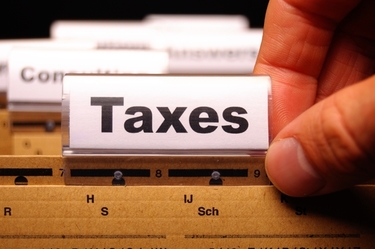
In 2009, the United States was suffering a major recession that had bond market investors running from municipal bonds. So, as part of the American Recovery and Reinvestment Act enacted by President Barack Obama in 2009, Build America Bonds (BABs) were introduced to provide much-needed funding infrastructure to local governments.
This works because the interest on these bonds is subsidized by the federal government, making borrowing for infrastructure projects cheaper for state and local governments. As you can imagine, the program was popular, but not just with cash-starved governments. In fact, the relative scarcity, higher returns, and safety of BABs compared to other debt offerings has made them a boon to investors as well. Here we’ll take a look at Build America Bonds, how they work, how investors can buy them, and we’ll introduce you to a newer way to get in on these issues using Build America Bond ETFs.
A Look at Build America Bonds
Build America Bonds first became available to investors in April of 2009, but were orphaned in 2010 when Congress failed to extend the program. However, that doesn’t mean these bonds are gone for good at the time of writing; there’s still a possibility of permanent reinstatement of the program as part of the Democrats’ pledge to reinstate BABs if they win back the majority of the House. When BABs were introduced, two types were issued. The first was called Direct Payment BABs, and, in this case, the direct payment was made from the U.S. Treasury to bond issuers in the form of a subsidy of 35% of the interest they owed to investors. Reducing the effective rate of interest for the issuer allowed municipalities to sell these bonds at a rate comparable to corporate bonds. That’s definitely a benefit for investors. But what really sweetens the deal here is that because these bonds are issued by municipal governments (which have a good track record in terms of repaying investors) and are subsidized by the federal government, the rate of default is much lower than on corporate bonds.
The other type of Build America Bonds is Tax Credit BABs. These BABs provided a federal subsidy of 35% of the interest directly to bond investors through tax credits, thus reducing the bond owner’s tax liability. The Direct Payment BABs have actually been more popular with investors, especially lower income investors who don’t get the same benefit from a tax break as those in higher tax brackets. This includes large institutional buyers, especially tax-exempt ones such as pension funds.
Build America Bonds and Taxes

By now, it’s probably pretty clear that taxes have a lot to do with BABs. In fact, the biggest difference between BABs and other municipal bonds from an investor’s perspective is that BABs are not tax-free. While many municipal bonds provide income that is free of federal, state and local income taxes, Build America Bonds are subject to tax at the federal level. So why, you might ask, would investors flock to buy them? Good question. And here’s the simple answer: the yield on BABs is about three times higher than that delivered by 30-year Treasuries, according to Bloomberg. Combined with the relative security these bonds provide compared to corporate issues, those returns can make these bonds very attractive, not least of all for international buyers who wouldn’t be eligible for the tax breaks on traditional muni bonds anyway.
Buying BABs
You might assume that because Congress has resisted reinstating the BAB program that these bonds are no longer available. Not so. Municipal bonds were issued by many local and state governments across the United States during 2009 until the program ended in 2010. According to the U.S. Department of the Treasury, between the program launch in April, 2009 and October 31, 2010, local and state governments in all 50 states had sold a total of 1,912 separate Build America Bond issues. Some of the biggest issues came from California, New Jersey and New York. However, while individual investors tend to drive much of the traffic in the municipal bond market, most BABs were snapped up at issue by institutional buyers seeking stable, long-term sources of income in an unusually tight credit market. But interested investors could, and still can, purchase BABs in the secondary market, just like other bonds. Other investments that include or are based on BAB returns, such as mutual funds and ETFs, provide a range of opportunities here.
Build America Bond ETFs

Because ETFs are so easy to buy and trade efficiently, they might be a great way to capitalize on BABs. The lower interest rate environment has had investors seeking options with less risk and comparable yields to stock funds. Generally speaking, BABs have beat out their muni bond cousins by a large margin, and because the supply of these bonds is essentially limited, they could be subject to higher levels of demand in the bond market. Thanks to these factors, Build America Bond ETFs could be an interesting choice for those looking for a solid fixed-income play. The key funds to watch here include the PowerShares Build America Bond Fund (BAB) and the SPDR Nuveen Barclays Capital Build America Bond ETF (BABS).
The Bottom Line
Municipal bonds have always been safe investments, but in recent years, low yields haven’t made them terribly profitable. Build America Bonds are a way for investors to play the bond market without being forced to look for higher risk or higher duration securities with better returns. And although new BABs may not be issued, many such securities are still available to investors in the secondary market.






